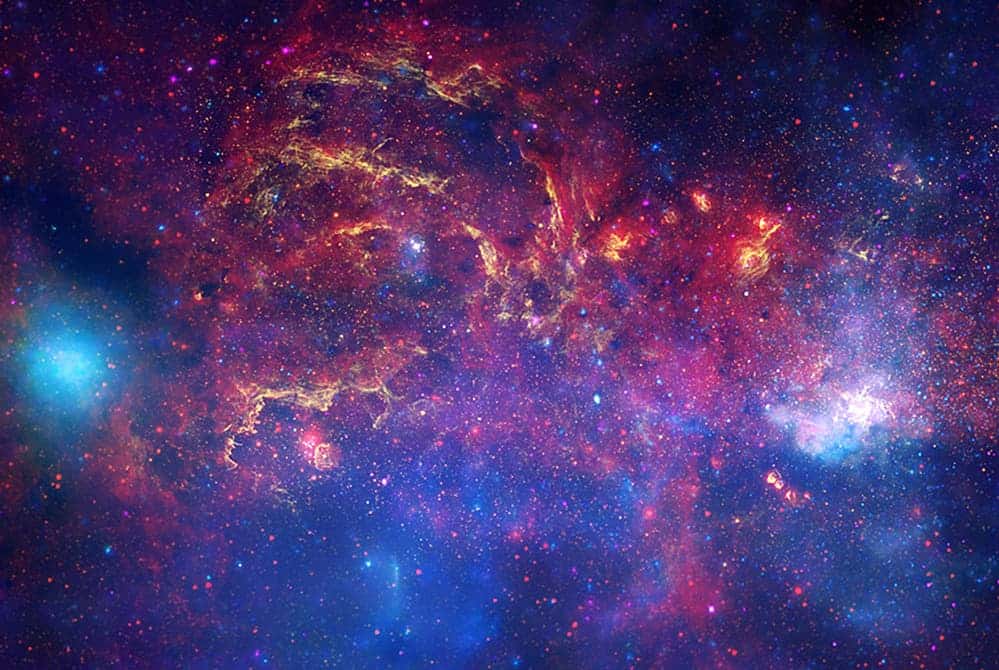As we know by now, most galaxies, including our own, have a supermassive black hole at their center. However, the one in our galaxy, Sagittarius A* (pronounced Sagittarius A-star) has a surprisingly small appetite, something which has puzzled astronomers for years.

This composite image combines observations using infrared light and X-ray light that see through the obscuring dust and reveal the intense activity near the galactic core.
IMAGE: X-RAY: NASA/CXC/UMASS/D. WANG ET AL.; OPTICAL: NASA/ESA/STSCI/D.WANG ET AL.; IR: NASA/JPL-CALTECH/SSC/S.STOLOVY Via MIT News.
Sagittarius A* is 4 million times as massive as the sun, but it is devouring much less material than it would be expected for a black hole of its size. By studying 3 million seconds of observations taken by the Chandra X-Ray Observatory, a group of researchers from the MIT and the University of Massachusetts at Amherst believe they have found the answer.
“The black hole doesn’t have a chance to do its meat-grinder thing and turn that matter into energy,” says Joey Neilsen, who contributed to the research as a postdoc at MIT’s Kavli Institute for Astrophysics and Space Research. “All of that stuff basically escapes before the black hole can destroy it.”
The group’s work focused on iron and X-rays: iron can be found on the surface of stars, as well as in the gas surrounding a black hole; the iron is much hotter on the black hole. To determine where the majority of X-rays were coming from, the researchers calculated the temperature of the iron, given its X-ray emission lines. They calculated that there’s plenty of hot iron, suggesting much of the X-ray activity arose not from a cluster of stars, but from gas surrounding the black hole. So if there’s all this hot material around it, why doesn’t the black hole consume more?
The likeliest, and so far, only reasonable explanation for such finicky eating is was that the gaseous material ejects itself in the form of hot wind, before the black hole can consume it.
“We think most of the energy, or a lot of it, is going toward pushing the gas away from the black hole and not letting it fall in,” says Mike Nowak, a research scientist at MIT Kavli. “Now we have a better understanding of what parts are active, and what aren’t.”
Now the question remains if this is something specific for Sagittarius A*, or if it is something typical for most supermassive black holes. This, however, is a question all but impossible to answer.
“However, the degree of inactivity — a factor of a million or so — is remarkable, in part because we have so much better and higher-resolution data in this case,” notes Genzel, who was not part of the research team. “The beautiful high-resolution Chandra spectroscopy presented in this paper will, for the foreseeable future, never be available in other galactic nuclei.”









